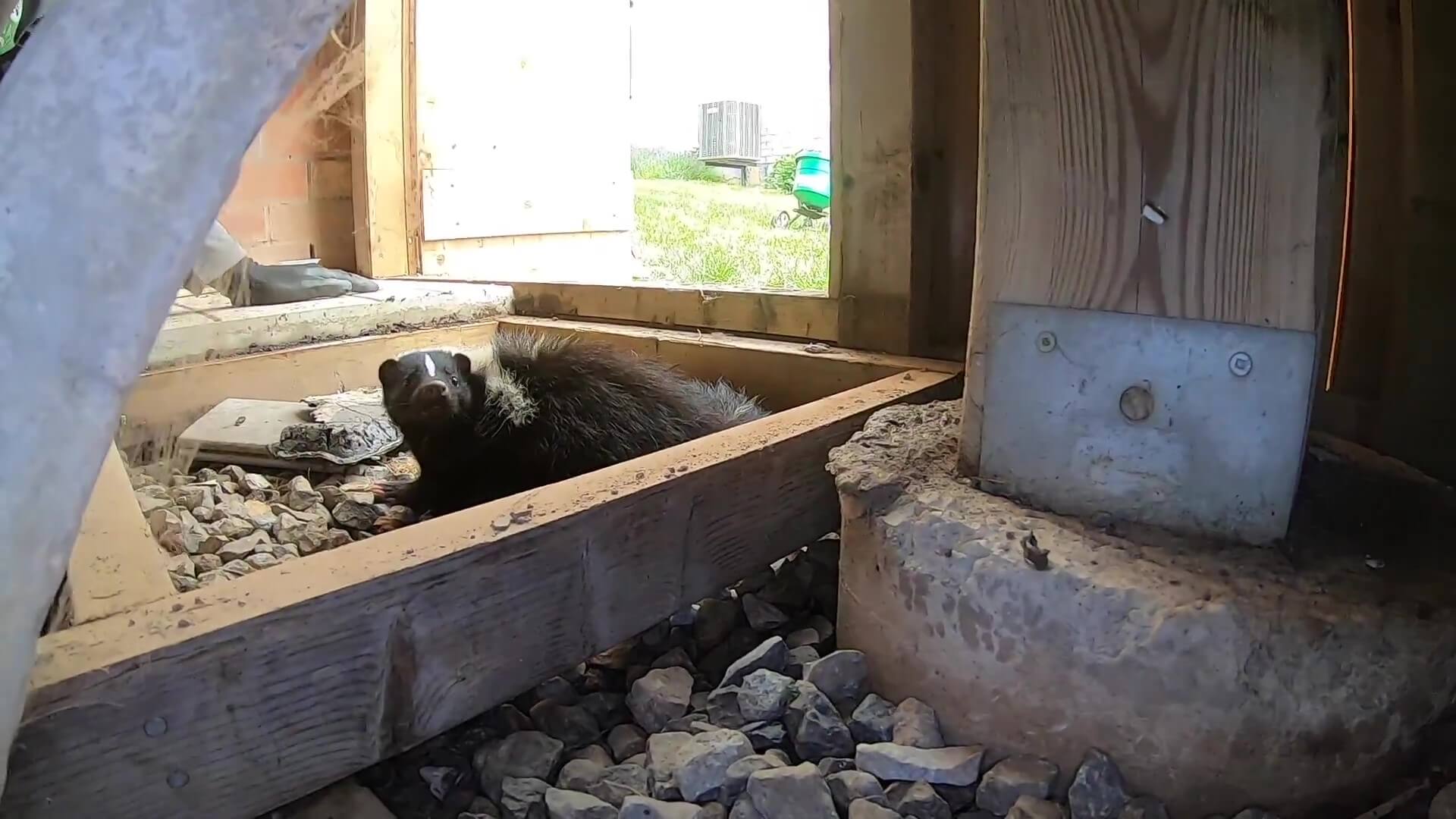Aside from their stinky spray, skunks usually pose little to no threat to humans or pets. Regardless, no one wants to be sprayed by a skunk if they can avoid it. The skunk doesn’t even really want to spray you; when they use their spray, it can take up to two weeks for their reserves to rebuild. During the time that it takes for their stinky defence to regenerate, skunks are largely defenceless to larger predators. Rather than provoking the animal, calling professionals for skunk removal in Durham is the best idea. Learn more about the warning signs that skunks display before they spray and what to do if you’ve been skunked.
How To Tell if a Skunk Might Spray
Skunks hate surprises. One of the most common ways people report being sprayed is by coming out of their homes, cars, or garages and surprising a skunk. In other instances, skunks are more likely to give better warning signs so that you have ample opportunity to remove yourself from the situation before getting the stink. Remember, skunks don’t want to spray any more than you want to be sprayed.
Noises
At the initial encounter, skunks may make their presence known by becoming vocal, and they may begin to create a series of noises to let you know they are willing to spray if need be. Skunks may hiss, growl, or chitter to communicate.
Stomping
Just like a toddler, skunks will stomp their feet and charge back and forth a short distance. This “dance” lets you know that they will aggress if they have to, although they won’t. Skunks have accuracy in their spray from up to 10 feet away.
Shaking
Raising their tailing and shaking both their rump and fluffy tail is a sign that the spray is on the way. If a skunk has exhibited all the prior signs and begins shaking its tail, you should start backing away slowly.
Posturing
If the warning signs still aren’t working, the skunk might do a handstand. If that isn’t deterring you, it will begin to contort its body into a u-shape. In the u-shape, both the skunk’s head and its rear end will face you as it prepares to aim and unleash the spray.
How To Destink if You’ve Been Skunked
If you have been skunked, you know how challenging it can be to remove the smell from your clothes, body, dog, and, honestly, even your nostrils. The spray of a skunk is one that indeed lingers. The reason the smell stays far past your encounter with the skunks is due to its chemical compounds. Skunks spray is made of thiols, also known as mercaptans and thioacetate. Thioacetates are the trickiest part of the skunk spray; once exposed to water, they react, and the smell increases. To help remove skunk spray, you have to take a scientific approach.
Solutions
While tomato juice has long been considered the way to remove the smell of skunk, that has been proven to be mostly myth. To best remove the smell of skunk, scientists recommend creating a solution that will oxidize the thiol. Create a mixture of baking soda, a little dish soap, and diluted hydrogen peroxide and apply it, but be cautious because peroxide can dye clothes and fur.
The best way to avoid being sprayed by a skunk is to avoid the encounter altogether. Do everything you can to prevent startling a skunk, which could cause them to spray inadvertently. If you happen to cross paths with a skunk, slowly back away with no sudden movements. Never attempt skunk removal on your own due to the dangers involved with wildlife. Contact the professionals at Skedaddle Humane Wildlife Control for more information on skunk removal in Durham.




